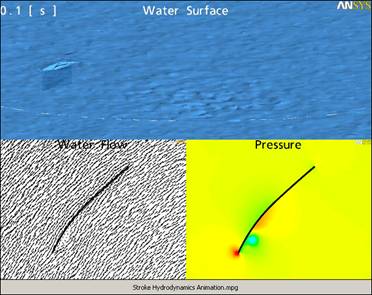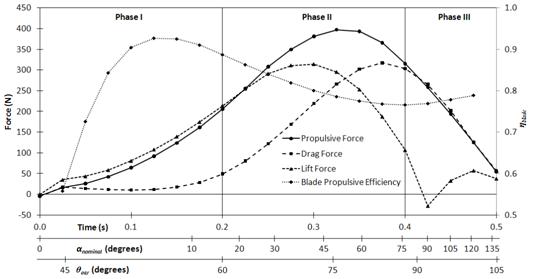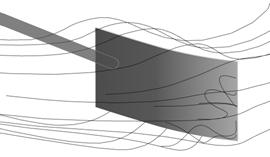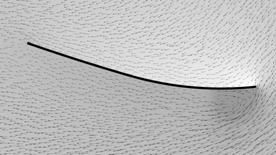|
Rowing topics |
|
Dr. Stephen Tullis
|

|
Home |
|
People |
|
Research |
|
Publications |
|
Courses |
|
Contact |




|
Three-dimensional flow pattern around a blade at an instant during the stroke |
|
Speed and direction vectors of the flow on a horizontal plane through a blade |
|
Behaviour of the water surface, flow vectors, and pressure contour over the course of a stroke |
|
Forces (drag, lift, and propulsive) on the blade, and the instantaneous blade efficiency throughout a stroke |
|
With Andrew Sliasas (M.A.Sc.) |
|
Modelling the complex interactions between the athlete, boat, and oar during the rowing stroke can reveal areas where rowing efficiency can be improved. > Hydrodynamics of oar blade flow To date, substantial work has been done numerically modelling the oar blade-water interaction through the stroke. A realistic model of this complex flow was created by coupling an analytical force-based model of the rowing stroke to a CFD model of the transient, three-dimensional free-surface flow.
Using this model, changes to a specific rowing variable (blade design, rower stroke profile, boat rigging, etc.) can be evaluated on the basis of its effect on stroke efficiency. In doing so, the model can be used as a tool both for coaches to study the biomechanics of the rowing stroke, and for equipment manufacturers to easily and affordably test new designs.
> Rowing boat (shell) design A project is in development to better understand the influence of shell flexure (due to forces generated during the stroke) on its efficiency in transferring rower power into boat velocity. |